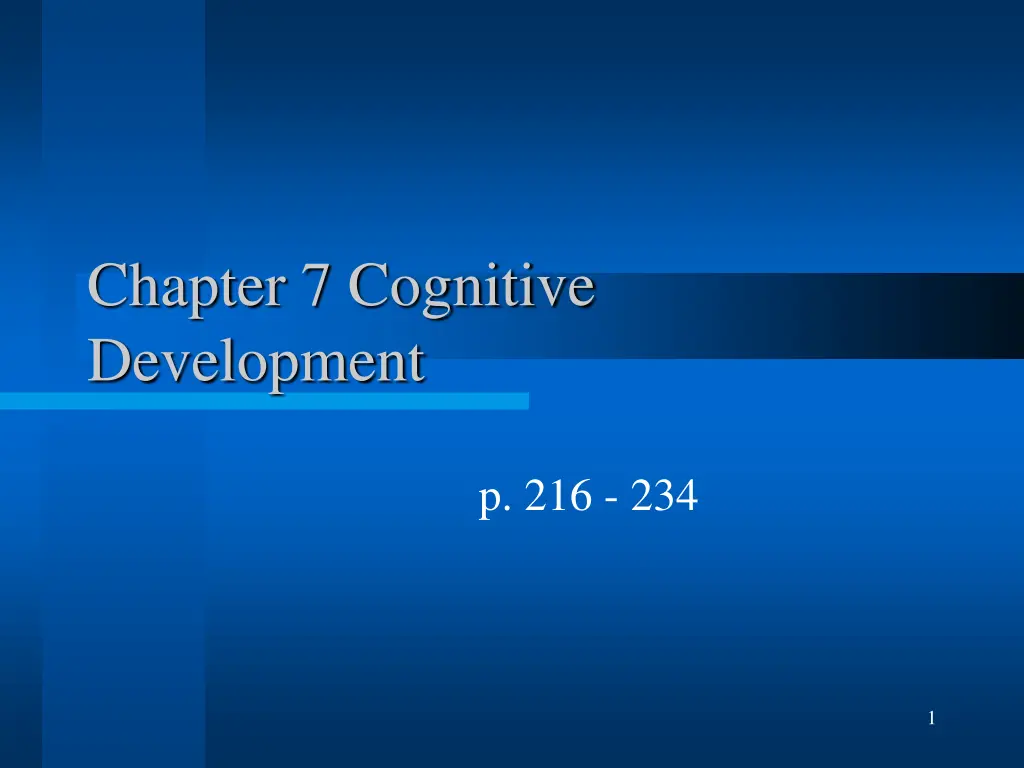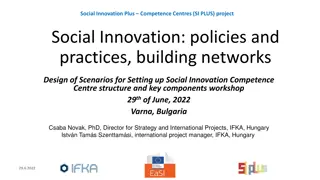
Understanding Cognitive Development: Thinking, Knowledge, and Piaget's Theory
Explore the concept of cognitive development, including thinking processes, knowledge acquisition, and Piaget's Theory. Learn about the relationship between language and thought, the different aspects of cognition, and how structures and schemes change over time.
Download Presentation

Please find below an Image/Link to download the presentation.
The content on the website is provided AS IS for your information and personal use only. It may not be sold, licensed, or shared on other websites without obtaining consent from the author. If you encounter any issues during the download, it is possible that the publisher has removed the file from their server.
You are allowed to download the files provided on this website for personal or commercial use, subject to the condition that they are used lawfully. All files are the property of their respective owners.
The content on the website is provided AS IS for your information and personal use only. It may not be sold, licensed, or shared on other websites without obtaining consent from the author.
E N D
Presentation Transcript
Chapter 7 Cognitive Development p. 216 - 234 1
Thinking & Thought What are thinking & thought? How shall we treat them from a natural science viewpoint? How do they develop? How are language & thought related? 2 Novak & Pelaez
Thinking (Cognition) Cognition = the act or process of knowing Knowing = thinking What is thinking? An action, a behavior What makes thinking different from other operant behaviors? 3 Novak & Pelaez
Its all about LOCATION Cognitive behavior thoughts Private events inside the skin (i.e., covert) . . . But this is not true for all 4 Novak & Pelaez
Examples of Thinking 5 Novak & Pelaez
3 Aspects of Cognition 1. Knowledge 2. Ability 3. Problem Solving These are operant behaviors 6 Novak & Pelaez
Cognitive Development Involves changes in our knowledge and abilities over our life span 7 Novak & Pelaez
What is Knowledge? Examples: 8 Novak & Pelaez
Piaget 1896 1980 Developed the first standardized intelligence tests Noticed particular errors children made Tried to identify the logic used in producing these errors Used clinical method 9 Novak & Pelaez
Piagets Theory of Cognitive Development What Changes? Structure Schemes How Do The Structures Change? 10 Novak & Pelaez
What Changes? Structure Schemes Schemes Enactive Representations Circular Reactions Behavioral schemes Iconic Representations Language Symbolic Themes Symbolic Representations Operational Schemes 11 Novak & Pelaez
How Do The Structures Change? Functions Adaptation = Assimilation & Accommodation Adaptation Assimilation Accommodation Equilibrium Disequilibrium Equilibrium Disequilibrium Optimal Discrepancy 12 Novak & Pelaez
Piagets Stages of Cognitive Development Sensorimotor Stage: (Birth-24 months) Preoperational Stage: (2-7 years) Concrete Operational Stage: (7-11 years) Formal Operations Stage: (12 years and up 13 Novak & Pelaez
Sensorimotor Stage Reflexes Primary Circular Reactions Secondary Circular Reactions Coordination of Secondary Schemes Tertiary Circular Reactions Symbolic Problem Solving 14 Novak & Pelaez
Preoperational Stage Preconceptual Period: (2 4 years) Intuitive Period 4 7 years) 15 Novak & Pelaez
Concrete Operations Stage 7 11 years Operational Schemes Inductive Reasoning 16 Novak & Pelaez
Formal Operations Stage 12 years + Formal Operations Abstract Thinking 17 Novak & Pelaez
Problems with Piagets Theory 18 Novak & Pelaez
Vygotskys Theory of Cognitive Development The Zone of Proximal Development (ZPD) What the child can do alone vs. what the child can do with the help of others Scaffolding Assistance which can lead to cognitive, social and behavioral development Cultural Tools The physical things and intellectual tools that are part of the child s cultural experience 19 Novak & Pelaez
Behavioral Approaches to Cognitive Development Knowledge and Ability Natural and Contrived Consequences Problem Solving Exploratory Behavior Creative Behavior 20 Novak & Pelaez
Knowledge and Ability Knowledge: knowing about things Simple Discriminative Behavior Conceptual or Abstract Behavior Describing Past Events Describing How Things Work Ability: knowing how to do things Operant sequence behavior occurring in certain order Operant characteristic response topography 21 Novak & Pelaez
Natural and Contrived Consequences Natural Reinforcers Strengthening stimuli that are an inherent consequence of a response Extrinsic Reinforcers Environmental strengthening stimuli that must be presented by oneself or by another 22 Novak & Pelaez
Problem Solving Two steps in solving a problem: Change the situation so that a solution is obtained Emit the problem-solving behavior so that reinforcement of the solving behavior may occur 23 Novak & Pelaez
Exploratory Behavior Exploratory Behavior Ecological Stimulus Affordance Reinforcement traps 24 Novak & Pelaez
Creative Behavior Behavior develops under two conditions There is a development of a large repertoire of knowledge and ability responses A history of reinforcement for making new combinations of knowledge and abilities Creative Behavior = history of knowledge and ability + history of being reinforced for unique combinations 25 Novak & Pelaez
Study Questions 1. What is Cognition and what makes it different from other operant behaviors? 2. How do you know if someone knows something? Provide an example. 3. What is Piaget s and Vygotsky s Theory of Cognitive Development? How are their theories different and what are some problems with each of their theories? 4. What is Cognition to a behavior analyst? How is the Behavioral approach to Cognition different than earlier theories? 5. Pick one: Problem solving, exploratory behavior, or creative behavior. How is does this repertoire develop? Provide a detailed example. 26 Novak & Pelaez

